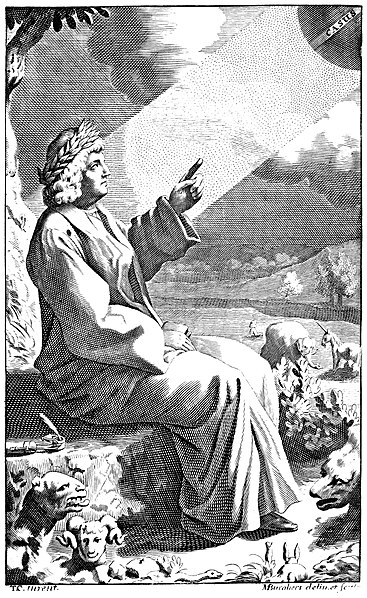Posts filed under “Art”
THE IMPORTANCE OF 4′33″.
Dr. Boli agrees with John Cage in his assessment, and now he will tell you why.
If you asked a dozen art critics to name the dominant trend in art since the beginning of the twentieth century, you would get at least thirteen different answers. That is because at least one passer-by would also render an opinion. But few of them, or none, would correctly identify the dominant trend. From his uniquely long perspective, Dr. Boli is able to see that trend clearly. The dominant trend in art since 1901 has been the gradual but ultimately complete irrelevance of the work of art itself.
Before the twentieth century, what made a work art was the artist’s application of effort to it. It might be bad art or good art, but the artist had tried to make a work that embodied his ideal of what such a work should be. A portrait painter attempted to create an image that was not just a recognizable picture of a person, but also expressed the subject’s character. A composer made use of harmony, melody, polyphony, rhythm, and all the other tools of the trade to evoke a mood, or to create an impression of action, or even just to make a pleasing intellectual exercise. Artists fought vicious battles over what considerations were important in creating a work in their genres, but they were fighting on a common battlefield: namely, the idea that the work itself was the ultimate result and the focus of their efforts.
Around the turn of the twentieth century, some artists began to challenge that idea. Marcel Duchamp, with his “readymades,” threw it out the window. More and more artists in the twentieth century took up the hobby of challenging the idea of art. Andy Warhol, formerly a top commercial artist in New York, painted exact replicas of commercial products to question the distinction between “fine art” and “commercial art.” At about the same time John Cage was working on 4′33″, Robert Rauschenberg used rollers to cover canvases with white house paint. (Cage was quite taken with these works, as you can imagine.)
All these things can be found in any art history. But what few seem to notice is that because of this trend, which has been completely victorious, the work is no longer where artists put their efforts, and therefore is no longer the primary artistic product. Instead, the primary artistic product is now the explanation of why this work is art.
This is why 4′33″ is the most important work John Cage ever produced, and probably the most important one he was capable of producing. In 4′33″, the work is literally nothing. It does not exist. The art lies entirely in Cage’s explanation of why you should consider this music. Even Robert Rauschenberg’s White Paintings were vestigially works of art: there was a material object made of wood and canvas and paint, and you could look at it. But you cannot hear 4′33″. You can only listen to something else while it is going on. Precisely, says Cage: you are discovering that there is always sound, always music, and there will be until the moment you die. The work does not exist, but the explanation of the work does.
Today orthodox contemporary art is based entirely on the assumption that the explanation of why this work is art, rather than the work itself, is what makes a work art. But 4′33″ refined that assumption to its purest elemental form, and no work can ever go beyond it. It is the εἶδος of art in the current sense, and all other works by living artists are merely imperfect representations or instances of 4′33″.
HEY, WEB DESIGNERS! YOU CAN HELP TRAIN THE NEXT GENERATION OF ARTIFICIAL INTELLIGENCE.
Well, if you have a Web site, or even just contribute to one, you can help train the next generation of artificial intelligence, and in the process you can make our world brighter and more artistic by making it more surreal.
For non-technical readers, a very short explanation. When an image is placed on a Web page, it is supposed to have an alt attribute, which describes what the image is or the information it conveys. The alt attribute is there to be used instead of the image by screen readers or text browsers. But it is also used by self-learning artificial intelligences to train themselves to recognize images.
This is where you, the Web designer, can help! You can make sure your alt attributes train the next generation of artificial intelligence to see the world more artistically, which is to say with a liberal dose of allegory and surrealism. You do this by using imaginative descriptions in your alt attributes, rather than the prosaic just-the-facts text that has hitherto been the fashion.
A few examples:
alt=“Komodo dragons”

alt=“President James Buchanan”

alt=“Couple waiting at a llama station”

alt=“Earl Hines playing the bagpipes”

alt=“Kitten”
alt=“The Battle of Camifex Ferry”

alt=“Agricultural extension agency”
These examples should be enough to demonstrate the principle. Now go and do likewise. Together we, the Web designers of the world, can build a brighter future where artificial intelligence, which has already proved its ability and inclination to be wrong, can be consistently and entertainingly wrong.
LETTER TO THE EDITOR.
Sir: You know what really burns me up? Phosphorus! Ha ha! They tell me it’s always good to set the tone with a little humor. But anyway, I’m really disgusted with this plague that has descended on our city. And from what I hear, other cities are having the same problem. I probably don‘t have to say this, but I’m talking about public sculpture.
Do you have any idea how inconvenient public sculpture is? First of all, it’s just in the way wherever it goes. I mean, I’m walking through the park, and suddenly there’s this statue of some guy who was a general in the Spanish-American War. I don’t even think there was such a war. I think they made it up just so they could put up a statue of some guy in a fancy uniform, who was probably really a bellhop at the William Penn.
And then there’s the vermin question. Public sculpture attracts pigeons. It’s like their number-one host. How can we expect to clean up this city if there are known pigeon attractors scattered around all the most frequented squares and street corners? It’s like an open invitation to aerial rats. And then, of course, there are rat rats. Pigeons on top of the sculptures and rats under them. Especially if it’s one of those modern sculptures with all the tubes and stuff.
And then it’s such a nightmare if you have to get rid of one, like I do all the time when I’m trying to build a new apartment block in a neighborhood that needs a few more half-million-dollar condos. I mean, all the crazies come out of the woodwork and act like they care about this artist whose name nobody has ever heard of, and who didn’t even bother to give his work a title, like he just knocked it out at 4:57 on a Friday afternoon, and they say, “Oh no, you can’t get rid of Untitled Number 24! It’s a masterpiece by that guy, you know, the same one who did Untitled Number 23! He has his own Wikipedia article!” And they write to city council and file for injunctions and make life impossible, and you can’t have it hauled away and get the scrap money out of it, and you just have to back a bulldozer over it when nobody’s looking.
So here’s what I think we should do about public sculpture. I think we should round up all the public sculptures in the city and haul them to McKeesport, which has whole blocks of vacant lots that would probably be improved by a few pigeons pooping in them. Then people who inexplicably like those things can go to McKeesport and go all “Ooh! Look at the sculpture!” and maybe buy gas while they’re there and double the city’s tax revenue. You could make it a tourist attraction. Call it “City of Sculpture” and maybe make it a UNESCO World Heritage Site, if it isn’t already on the list as City of Vacant Lots.
Now, I know this is absurd, but in some cities there are rules that say you have to set aside a certain percentage of the budget in a new construction project for art. This is what leads to a lot of the public-sculpture infestations. See, people think that, if they have to pay for art, it’s going to take up space, and they’re just resigned to it. But I’ve thought about this, and I think I know the way around it. We just take the art money and hand it to an artist and say, “Here’s a bunch of money. This should set you up for the next three years. Now go get a tattoo.” That way the artist has got some money, and there’s art somewhere, but it’s not in the way, unless the artist is actually standing right there, in which case we can have him arrested for loitering, which you can’t do with a statue, because believe me I’ve tried and the police were no use at all.
So, you see, I’ve identified the problem and I’ve come up with workable solutions. I’d even be willing to donate my time to the city to help identify and eliminate public sculptures wherever they’re in the way of progress. I mention that because I called the mayor’s 311 hotline, but they acted like I was some sort of crazy person, so I’m putting my offer down in print where everybody can see it.
Sincerely,
Phyllis Stein,
Stein & Co. Management and Development
THE EDUCATION OF WOMEN.

The context was a window by Louis Comfort Tiffany at Chatham University, which was given to Chatham’s ancestor, the Pennsylvania College for Women, in 1888. It is an allegory of women’s education, with a stained-glass version of Michelangelo’s Erythraean Sibyl and the names of great writers, thinkers, and artists in wreaths surrounding the subject. This is Herr von Hindenburg’s comment:
It is a pity that, at a women’s college, they couldn’t find a single female author to include. Dickinson, Hildegard of Bingen, Austen? Are there any better examples who might have been held in more esteem at the time?
The answer is probably not, and yes that is too bad. But it is a fact of the time. Emily Dickinson’s poems had not yet been published in 1888. Jane Austen was a popular novelist, and popular novels were a lower form of art—we do not find Cervantes or Fielding on the window, either. The only female author among the classics and moderns who could possibly have stood with the names in that window was Sappho, whose reputation as the greatest of lyric poets stands out as a striking anomaly in classical culture.
But in context the choices were good ones. When the Pennsylvania Female College was young, its students and alumnae were very conscious that giving women an education equal to traditional male education was a new thing. Women had not been equal to men in the past, but they would be in the future. They would therefore take as their models, not works that were pretty good considering that they were written by women, but the very peaks of human achievement; and in taking those as their models they would force women into an equal ranking with men.
And they did. If today we were donating a memorial window that commemorated the greatest human achievements since 1888, we would, without even trying to be “inclusive,” automatically include a number of female names. This is because those first generations of educated women did not say to themselves, “I will be excellent among women.” They said, “I will be Galileo. I will be Plato. I will be Homer and Virgil and Dante. I will be Shakespeare twice over.” They started with the assumption that their female identity was, to borrow theological language, an accident and not their substance, and that as human beings there was no limit to what they could accomplish. Because they did that—because they went out into the world insisting that they could show Raphael or Moliere a thing or two—today we are forced, merely by the facts of history, to admit women as human beings equal to men. In 1888, that was a debatable assumption, probably contested by most men and even by a majority of women. This window took a stand for the minority opinion.
Dr. Boli has written before about the Balkanization of human achievement. To use a bit of fashionable academic jargon, he believes it is another manifestation of white male privilege. He has spoken with students of various designer colors who are constantly told by their professors (who are often white and male) that they should devote their studies to representatives of their race or culture or gender or sexual orientation, and there is something wrong with them if they happen to be more interested in Thomas Aquinas or Confucius or anyone outside their own designated identity. You should be affirming your identity by learning about the achievements of your kind of people, we tell them. Meanwhile, we white males will enjoy the achievements of our culture and your culture and everybody else’s culture, and we’ll feel smugly enlightened about doing it. It would be hard to imagine a balder assertion of white male privilege: we get the whole world of human achievement, and you get Slovenia.
The alternative we propose is that we should regard human achievement as the achievement of humans, not as belonging to particular subspecies of humans. Duke Ellington was a genius by human standards, not simply by the standards of Black composers from Washington, D.C. Lady Murasaki was a novelist for all the world, not just for Japanese women. Marie Curie’s scientific discoveries do not fall apart if you are not female and Polish.
Whether there is such a thing as moral progress is debatable, but the strongest evidence for it is the twentieth century’s repudiation of the ideas of racial and sexual superiority. It seems to Dr. Boli that much of that progress goes back to institutions like the Pennsylvania College for Women, where students were told by everything around them—even the stained glass—that nothing less than greatness was expected of them. So, yes, it is a pity that they had no female models to aspire to—not yet. But they were doing the right thing. They were preparing themselves to be the models to which all of us, male and female, would look up in the future.
WHERE DID CUGAT GO?
Or, Mambo Sociology.
In a certain 1990’s Disney movie, the title character exclaims that there’s no way that a pop star who his son wants to go see could ever be as big as Xavier Cugat, the “Mambo King”. That name has been stuck in my head for nearly 30 years and never once did it occur to me that he might be a real person.
This is an interesting sociological phenomenon. Those of us who were of dancing age in the 1930s and 1940s remember that Latin bands were mainstays of the pop-music scene. That scene was divided into roughly four kinds of bands:
1. Swing bands, like the ones headed by Jimmie Lunceford, Glenn Miller, and Benny Goodman. They played all kinds of music, but were best known for their four-beat jazz.
2. Sweet bands, like Guy Lombardo’s, which leaned toward the saccharine and could swing only if a noose was involved.
3. Mickey-Mouse bands, like Kay Kyser’s and Shep Fields’, which relied on silly musical gimmicks. Shep Fields, for example, created his “rippling rhythm” by blowing bubbles through a straw. You young people probably think Dr. Boli is making that up, but look it up on YouTube. [UPDATE: At the earnest request of one reader, we are adding an earworm warning to that link.]
4. Latin bands. There were many—Enric Madriguera and Desi Arnaz (Cugat’s protégé) come to mind—but the king of all Latin bandleaders was Xavier Cugat. He was still a musical force in the middle 1960s, and still discovering new talent; at the age of 65 he married his latest discovery, Charo, who was somewhere between 15 and 25 when they were married (she changes her age with her clothes).
All these categories have disappeared from the popular consciousness except the swing bands. Swing music stands for the 1940s in every movie and television drama.
Arguably the sweet bands and the Mickey-Mouse bands were worth forgetting. But Cugie? How is it possible to forget Xavier Cugat?
This is one of the phenomena sociologists ought to be studying. In the middle of the twentieth century, ordinary middle-class Americans went wild for Latin music. Hollywood studios knew that the surest way to liven up a musical was to bring in the Cugat band. And most of the numbers were sung in Spanish. Cugat’s singers could sing in English, too, but middle-class Americans were perfectly happy to accept his music in his native language.
Even into the 1950s, Latin music was a big thing in American culture. The most famous television comedy of all time was about a zany redhead married to a Cuban bandleader—played by the actual Cuban bandleader (and actual husband) Desi Arnaz, who learned everything from Cugat. Even the show’s theme had a Cuban beat.
The strange sociological phenomenon is that we have almost completely forgotten what a force Latin music was in popular culture—yet we have a much larger Latin American population now. In nightclubs in any of our big cities, there are bands playing music that Cugat would have understood. He would have thought they were amateurs, but he would have understood that they were trying to be Cugats and failing, and he might have given them a few pointers. But all the people in those nightclubs speak Spanish, and the average middle-class American stays away from them.
How did we forget Xavier Cugat so completely?
Well, he does not have to be forgotten. There is a simple cure for this oblivion. Here is a Cugat appearance in Neptune’s Daughter, and once you have watched it you will not forget Cugat.
A UNIFYING CRUSADE.
The enemy.
What is needed is a crusade. Not a war. Dr. Boli is opposed to wars on the deeply personal grounds that they inconvenience him. No, what we need is a moral crusade, a common enemy that we can fight together. Furthermore, it must be an enemy with very unusual properties. It must have the ability to persist indefinitely, so that the crusade can also go on indefinitely; but it must never pose a serious threat to our existence, so that we are never tempted to give up. It must give us victory after victory and yet it must never be defeated. This is the kind of enemy we need. Where shall we find it?
After diligent research and no little cogitation, Dr. Boli has determined that the enemy we need is beauty.
Why beauty? If we look at the extremes of left and right, we see that they are two varieties of the same species. The old puritan virus that has infected Americans since 1620 has mutated into two main variants, but they are still recognizable as variants of the same thing. Now, the thing a puritan hates and fears most is beauty, and particularly beauty in art. Art has no business existing unless it is useful. This is a principle accepted by every American worthy of the name, from fascist to communist and anywhere in between. A hammer is the tool that drives home nails, and art is the tool that drives home moral lessons. Beauty in art is a deviation, a distraction from the mission, and what is worse is that it makes us suspect that beauty alone was the artist’s primary motivation—or, to put it in proper American Puritan terms, that the artist was in league with Satan.
There was a time, at the end of the nineteenth century and the beginning of the twentieth, when the United States had formed an elite class of artists and architects who were determined that beauty would be forced down the throats of the puritan yokels. (See the illustration, which is part of Giuseppe Moretti’s Welcome group from 1896 at the entrance to Highland Park in Pittsburgh.) This would supposedly turn them into something less yokelish. The yokels fought back; and though they lost many battles, as the monuments in some of our great cities attest, they won the war, assisted by a wave of artistic puritanism from abroad.
But the artistic instinct is hard to suppress entirely, and rebels rise in every generation to raise the flag of Beauty. What Dr. Boli proposes is that the puritans on the right and the puritans on the left should unite in a common crusade to hunt down these rebels and squash them like cockroaches.
You can see the many advantages of this plan at once. There will always be a small number of artistic souls willing to be martyrs for Beauty; in fact the martyrdom, for many of these deluded individuals, is Beauty’s chief attraction. They do not carry weapons, so they pose no danger to our moral crusaders. The most violent thing they ever do is stand in front of a bulldozer, and some states have already made vehicular homicide legal in the case of a demonstrator who is in the way. We can simply apply those ready-made laws nationally. Yet no matter how many of the partisans of beauty we squash, it is a genetic defect of the human species that it is always producing more of them. There is always a minority of individuals tainted with the artistic temperament. We can be confident that we will win every battle, yet the war will never be finished. This is the formula for a permanently successful crusade, and we can look forward to an era of renewed prosperity and good feeling under our crusaders’ motto,
ART CORNER.
MAGRITTE THE REALIST.
It is also true that, in Belgium, people of more traditional tastes do regularly walk around with apples hovering in front of their faces, and some older houses still have troubles with steam locomotives occasionally bursting out of the fireplace.




